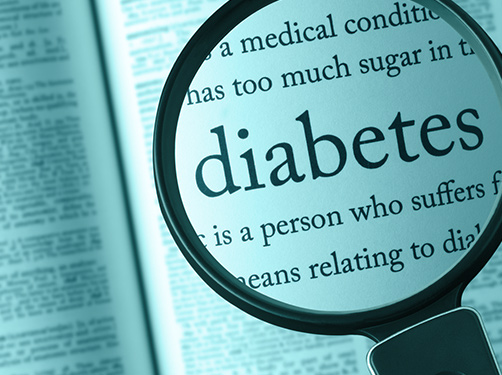How does gestational diabetes develop?
Scientific support: PD Dr. Sandra Hummel
In gestational diabetes the patient has persistently high blood glucose levels. This is because insufficient insulin is produced or because the cells in the body are not sensitive enough to insulin.
The risk of gestational diabetes is especially elevated if the patient is overweight. Having parents with type 2 diabetes, advancing maternal age and other factors increase the risk of developing the metabolic disease. The exact causes are still being researched.
The metabolic disease develops in the same way as type 2 diabetes and is therefore seen as a precursor to this form of the disease.

Contents
1. What happens to the body with gestational diabetes?
During pregnancy there are many hormonal changes in the body. Especially from the 20th week of pregnancy there is an increase in the hormones released. They ensure that larger amounts of energy are provided in the form of glucose in the mother’s body, or more precisely in her blood. This ensures that the unborn child is provided for and can grow.
To be able to absorb the glucose from the blood in the cells, the pancreas releases the hormone insulin. This allows the glucose to enter the cells as an energy source and to lower blood glucose levels.
The hormonal changes in pregnancy ensure that the effect of insulin is lowered - known as physiological insulin resistance. This happens in every pregnant woman. Normally the mother’s body balances this out by increasing insulin production. However, in gestational diabetes this process is impaired. This results in a relative insulin deficiency and blood glucose level rises.
Read here to find out what insulin resistance is and how it comes about.
2. What increases the risk of gestational diabetes?
The risk of gestational diabetes is especially elevated if the pregnant woman is overweight or has a genetic predisposition. The exact causes of the disease are still being researched. There is a lot to indicate that similar mechanisms are involved in the development of type 2 diabetes.
The following factors make a woman more likely to develop gestational diabetes:
- Type 2 diabetes in the parents and/or siblings
- Factors that make insulin resistance more likely, such as being overweight
- Excess weight gain during pregnancy
- Gestational diabetes in a prior pregnancy
- Age over 35
- 3 or more consecutive miscarriages
- Birthweight of earlier children over 4500 grams
- Polycystic ovary syndrome (metabolic disease in women)
- Being of south or east Asian, Latin American, African or Middle Eastern ethnic origin
- Sleep apnea (breathing disorder during sleep)
Good to know:
Smoking before and during pregnancy increases the risk of developing gestational diabetes.
Studies also show that pregnant women expecting a boy have a 4 percent higher risk of gestational diabetes than those expecting a girl.
Click here for more information about the diagnosis of gestational diabetes!
3. What role does being overweight play in gestational diabetes?
Women who are overweight are much more likely to develop gestational diabetes than women who are of a normal weight. Women with a body mass index (BMI) of 25 to 30 kg/m2 have a 2 to 6 times higher risk. Women with an even higher BMI are up to 20 times more likely to develop gestational diabetes than women of normal weight.
Being overweight or obese and a lack of exercise make hormone-related insulin resistance more severe, as happens in every pregnancy. It is not yet completely clear how this happens. It is suspected that fat cells, as well as acting as energy stores, themselves also release substances into the body. These can make the cells more susceptible to insulin resistance. Lack of exercise can also weaken the effect of insulin on the muscle cells.
Good to know:
Women who are planning to conceive should try to maintain a normal weight before they become pregnant.
If insulin resistance can not be balanced out by the body during pregnancy by increasing insulin production, blood glucose levels rise – this is called impaired glucose tolerance. Gestational diabetes then develops as a result of this.
4. What role does genetic predisposition play in gestational diabetes?
Another risk factor for gestational diabetes is genetic makeup (genes). Changes to the genetic material play a particular role which can reduce insulin sensitivity. Insulin resistance of this kind is characteristic of gestational diabetes.
Other genetic changes prevent the pancreas from producing enough insulin. Reduced insulin sensitivity combined with limited insulin production leads to a relative insulin deficiency.
In short:
Genes, being overweight and lack of exercise play an important role in the development of gestational diabetes.
A single genetic change or having type 2 diabetes in the family does not necessarily mean that someone will develop gestational diabetes. If several factors coincide, this can result in a higher risk of diabetes. Especially if someone is already overweight, the metabolism can be overexerted and gestational diabetes may develop as a result.
Epigenetics is now being researched as an additional risk factor for gestational diabetes, i.e. chemical changes to the genetic material that can develop over a lifetime.
Further information on gestational diabetes
Sources:
Deutsche Diabetes Gesellschaft et al.: S3-Leilinie Gestationsdiabetes mellitus (GDM) - Diagnostik, Therapie und Nachsorge. Langfassung. 2. Auflage. 2018
Deutsche Diabetes Gesellschaft et al.: S3-Leilinie Gestationsdiabetes mellitus (GDM) - Diagnostik, Therapie und Nachsorge. Patientinnenempfehlung. 2. Auflage. 2018
Kim, M. K. et al.: Pregnancy smoking and the risk of gestational diabetes requiring insulin therapy. In: Sci Rep, 2020, 10: 13901
Mora-Janiszewska, O. et al.: Epigenetic Links between Microbiota and Gestational Diabetes. In: Int J Mol Sci, 2022, 23: 1831
Plows, J. F. et al.: The Pathophysiology of Gestational Diabetes Mellitus. In: Int J Mol Sci, 2018, 19: 3342
Universitätsklinikum Carl Gustav Carus: Genetik des Gestationsdiabetes. (Letzter Abruf: 14.12.2022)
As of: 14.12.2022






